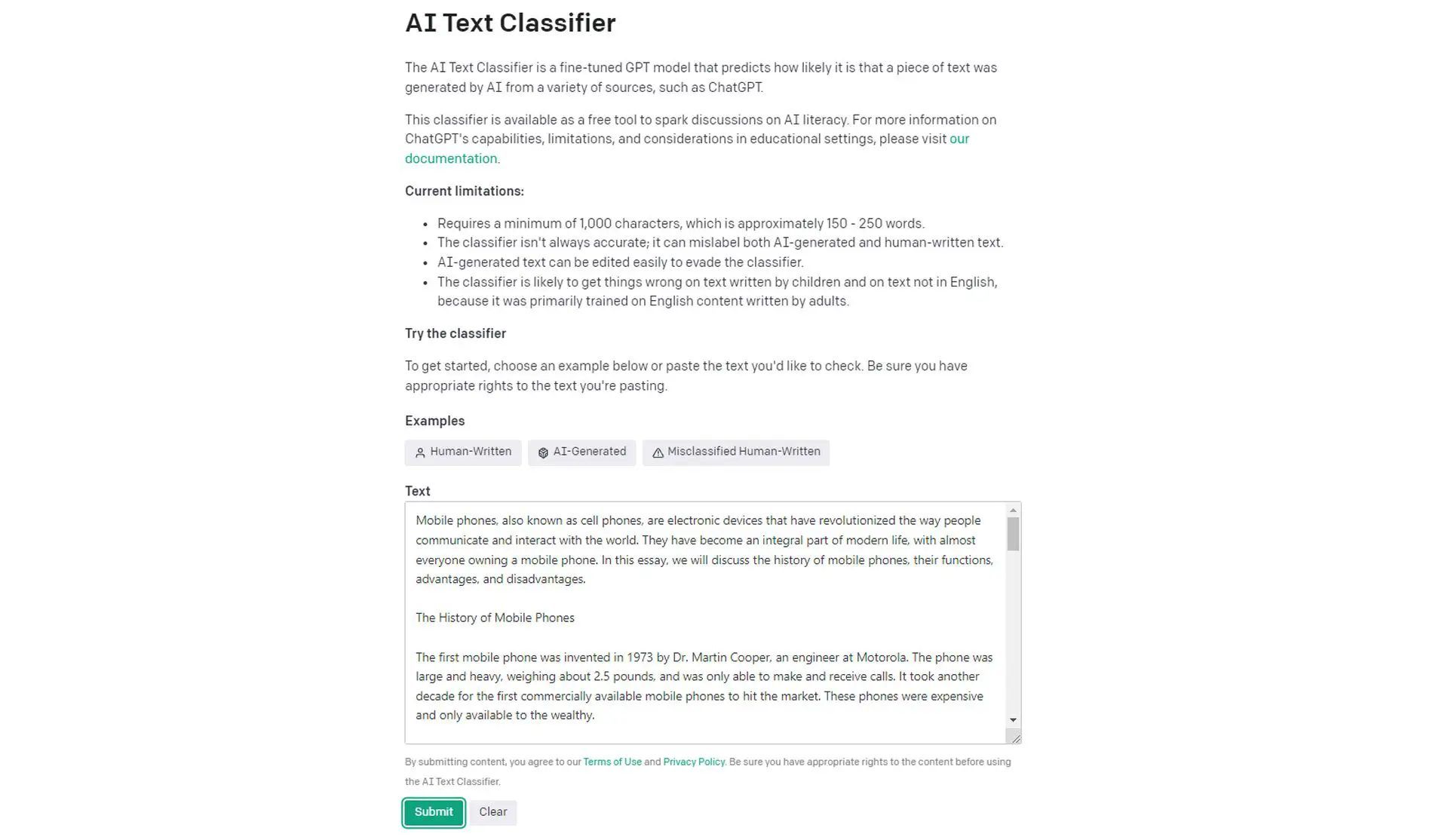As a result of its low accuracy, OpenAI has discontinued AI Classifier Tool designed to distinguish between human and artificially-generated writing.
OpenAI announced in a blog that it will discontinue its AI Classifier Tool. In response to customer comments, the corporation has said, “We are working to incorporate feedback and are currently researching more effective provenance techniques for text.”
OpenAI’s AI classifier tool was supposed to be a game-changer. The tool was designed to tell human writing from AI-generated text, and it was initially met with excitement by the tech community. However, the tool was ultimately shut down after it failed to improve its accuracy.
 AI Classifier Tool is shutting down by OpenAI
AI Classifier Tool is shutting down by OpenAI
There are a few reasons why OpenAI shut down the tool. First, the tool had a low accuracy rate. In some cases, the tool was only 60% accurate, meaning that it misclassified human-written text as AI-generated text 40% of the time. This is a significant margin of error, and it means that the tool was not reliable enough to be used in a production setting.
Second, the tool was difficult to use. The tool required a minimum of 1,000 characters of text to be classified, and it could take several minutes for the tool to return a result. This made the tool cumbersome to use, and it limited its usefulness for real-world applications.
Finally, the application could not be expanded. The program required retraining on a bigger dataset as the volume of AI-generated material on the internet increased, as it was trained on a dataset containing both human-written and AI-generated text. It was unclear if OpenAI was prepared to devote the necessary resources to such a massive project.

Is it possible to develop an accurate AI-generated text detector?
It is possible to develop an accurate AI-generated text detector, but it will be challenging. The problem is that AI-generated text is becoming increasingly sophisticated, and it is difficult to distinguish it from human-written text. However, there are a few things that can be done to improve the accuracy of AI-generated text detectors.
We need more information first. An AI-generated text detector’s accuracy improves as it is taught more data. As a result, businesses will have to amass larger data sets consisting of both human-written and AI-generated material.
Second, more effective algorithms must be created. Detection techniques for AI-generated text are continually being updated and refined. Text detectors made by AI will get more precise as new algorithms are developed.
Lastly, we need to make the tools easier to use. The AI-detection tools need to be simplified so that more people can benefit from them. This will increase the number of people who can benefit from the tools.
Meanwhile, you can try other AI content detectors and ChatGPT plagiarism checkers.
Conclusion
OpenAI’s AI classifier tool failed, but it does not mean that the problem of AI-generated text detection is insurmountable. With more data, better algorithms, and more user-friendly tools, it is possible to develop an accurate AI-generated text detector.
Featured image credit: OpenAI





